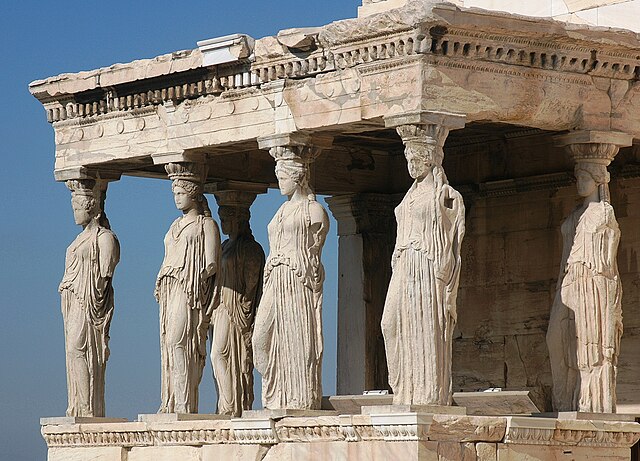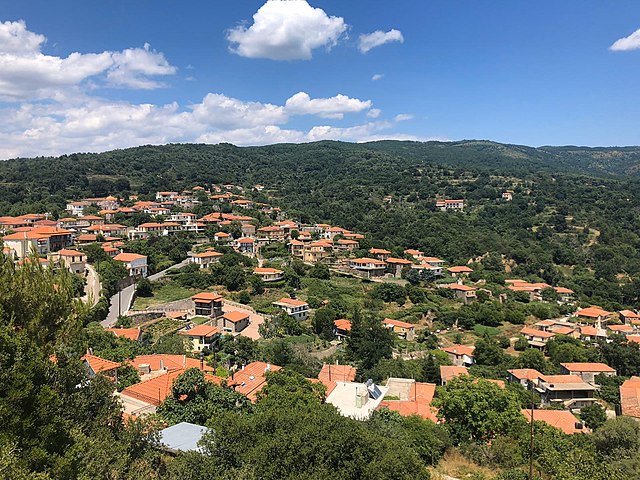A caryatid is a sculpted female figure serving as an architectural support taking the place of a column or a pillar supporting an entablature on her head. The Greek term karyatides literally means "maidens of Karyai", an ancient town on the Peloponnese. Karyai had a temple dedicated to the goddess Artemis in her aspect of Artemis Karyatis: "As Karyatis she rejoiced in the dances of the nut-tree village of Karyai, those Karyatides, who in their ecstatic round-dance carried on their heads baskets of live reeds, as if they were dancing plants".
The Caryatid porch of the Erechtheion in Athens, Greece. These are now replicas. The originals are in the Acropolis Museum (with one in the British Museum).
The caryatid taken by Elgin from the Erechtheion, standing in contrapposto, displayed at the British Museum
Intricate hairstyle of caryatid, displayed at the Acropolis Museum in Athens
Late Baroque caryatid and atlantid hemi-figures at Sanssouci, Frederick the Great's summer palace at Potsdam
Karyes is a village of the Peloponnese peninsula, which is located in the southern part of Greece. The Peloponnese is made up of a number of states and Karyes belongs to the state of Laconia in which Sparta is the capital. Karyes gets its official name from the word ‘walnut’ due to the village having many walnut trees and has been spelled a number of ways such as Karyes, Karyai, Karya, Caryes, Caryai and Caryae. It should not be confused with some other villages in Greece which go by the same name such as Caria of Asia Minor, Karyes, Mount Athos, Karyes, Pieria, Karya of Argos, and Karyes of Chios. Karyes also goes by the name of Arahova which was thought to have originated from the Slavic word for walnut. The village of Karyes is the birthplace of the six caryatid maidens which are featured in architecture in the place of columns on the ancient and world famous Erectheion of the Athenian Acropolis.
View of Karyes.
Government Building in the Town Square
Church of Saint Andreas in the Town Square
Caryatid monument, Karyes Laconia








